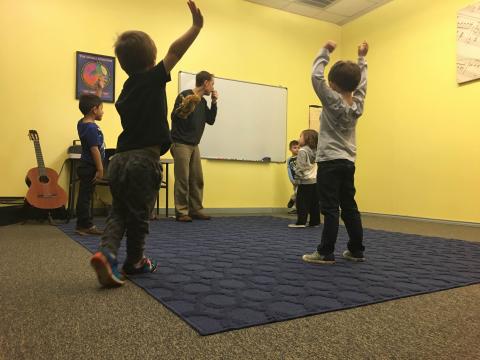Teaching Musicianship in Chamber Music Rehearsals
Frequently incorporating specific Musicianship skills into chamber music rehearsals can not only help reinforce students skills in those areas, but also make playing the ensemble piece easier. Here are a few tips for doing this:
First analyze the music for which Musicianship Skills will be most needed and most easily taught through this piece. Do you want to focus on:
- Scale or pitch set
- Rhythm
- Pickup (anacrusis)
- Melody and Accompaniment
- Form
Design a lesson plan that assumes no prior knowledge on the part of the students, but is based in something they are likely to have encountered or likely to use.
For scales or pitch set teach the scale at the first rehearsal by rote. Listen, sing solfege, note names and then echo play an expanding pitch set (ex. Do Do Do / Do Re Mi / Do Re Mi Fa / etc)
For rhythm it is often helpful to get student off their instrument, clap, keep the beat, student notates the rhythm on the board and then play as a group (perhaps as some sort of chord with each student playing a different note)
For pickups follow the same steps as rhythm.
For melody and accompaniment ask students to identify who has the main melody in each section.
Form to label each section not by “A” and “B” but with characters: “Mysterious” “Happy” “Frantic” “Goofy”
Further Ideas for activities with scales:
- Play the scale as a group but ask one student ahead of time to identify if everyone was matching (depending on the level of the group you can ask if they were just playing at the same time, same dynamic, or same articulation).
- Play the scale but designate a leader who will play with their choice of dynamic, articulation or even tempo (advanced) and the other students have to match.
- Play the scale in round listening for the same as the 2 above.
- Further Ideas for Rhythm
- Practice a difficult or recurring rhythm on a repeated note or combine with the scale exercises to play the scales in a particular rhythm from the piece.
- S walk a steady beat to T improvisation, when T plays the rhythm from the piece they clap along.
- Each S takes a turn playing the rhythm on a single note while others clap and say the rhythm (either in takadimi or 1e&a)
Further Ideas for Melody and Accompaniment
- S with accompaniment practice playing so quietly they cannot be heard.
- S play scales with one S designated as the melody and all the others have to be able to hear that S over the sound of the others.

- Log in to post comments
